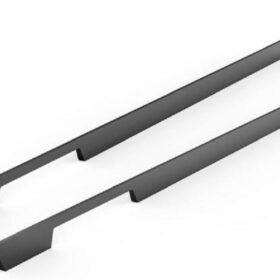Understanding the Manufacturing Process of Aluminum Alloy Handles
Aluminum alloy handles are widely used in various industries, ranging from construction to automotive. Their lightweight, durability, and corrosion resistance make them an ideal choice for a multitude of applications. To fully comprehend their effectiveness, it is essential to delve into the intricate manufacturing process that transforms raw materials into these functional components.
Casting
The manufacturing process commences with casting, where molten aluminum alloy is poured into a mold. The mold has been meticulously crafted to impart the desired shape to the handle. As the molten metal solidifies, it takes on the form of the mold, forming the basic shape of the handle.
Casting ensures the accurate reproduction of intricate geometries, enabling the creation of complex designs. It also allows for the incorporation of specific features, such as mounting holes or internal cavities, during the molding process.
Extrusion
Extrusion is employed to shape the cast handle into the desired cross-sectional profile. The heated aluminum alloy is forced through a die, which imparts the desired shape to the material. This process results in a continuous length of handle material with a consistent cross-section.
Extrusion offers several advantages, including the ability to produce handles with complex shapes and tight tolerances. It also enhances the material’s strength and durability by aligning the grain structure in the extrusion direction.
Machining
Machining involves the precise removal of material from the extruded handle to achieve the final shape and dimensions. This is accomplished using various machine tools, such as CNC mills and lathes. The skilled operation of these machines ensures that the handles meet the stringent specifications required for their intended use.
Machining allows for the creation of intricate features, such as threads, knurls, and grooves. It also facilitates the removal of excess material, resulting in a lightweight and ergonomic handle design.
Surface Treatment
Once the handle has been machined to the desired shape, it undergoes surface treatments to enhance its appearance and functionality. These treatments may include anodizing, which creates a protective oxide layer to improve corrosion resistance and durability.
Other surface treatments, such as powder coating or painting, can be applied to further enhance the handle’s aesthetic appeal and provide additional protection against wear and tear.
Assembly
The final step in the manufacturing process involves assembling the individual components of the handle. This may include the attachment of a grip, mounting brackets, or other accessories. The assembly is carefully executed to ensure that the handle meets the required functional and safety standards.
By understanding the intricacies of the manufacturing process, we gain a deeper appreciation for the exceptional properties and versatility of aluminum alloy handles. These handles combine superior strength, lightweight, and durability, making them a cornerstone for countless applications across diverse industries.
-
2024-11-29Top Trends in Modern Kitchen Cabinet Pulls for 2024
-
2024-11-28The Ultimate Guide to Modern Kitchen Cabinet Pulls- Materials, Styles, and Tips
-
2024-11-27Elevate Your Kitchen Design with These Must-Have Modern Cabinet Pulls
-
2024-11-26Sleek and Stylish- The Best Modern Kitchen Cabinet Pulls for a Contemporary Look










